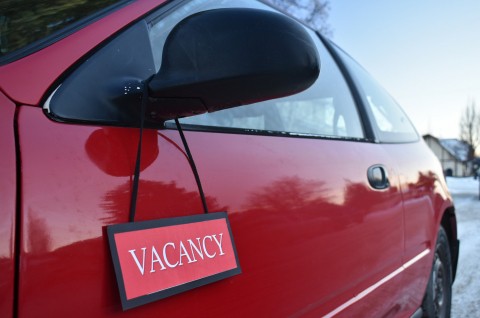Expanding the ridesharing programs in Saskatoon beyond the existing non-commercial community groups to include companies like Uber and Lyft has been a contentious issue between the city and the local taxi industry. Commercializing ridesharing in Saskatoon may cause problems without the proper legislation.

Rideshare companies could fill gaps in transportation services for Saskatonians.
The primary benefit of these app-based ridesharing services is their ability to provide more transportation options that are safe and accessible in our growing city. They also offer fairly priced transportation for people who are under the influence, which can deter people from driving impaired. The introduction of services like this into Saskatoon could also force the stagnant taxi businesses to grow and better their own services.
More options for safe transportation are needed here in Saskatoon. Everyone knows that it’s not easy to catch a cab after a late night at any of the local watering holes, and thus, many patrons seek out other, sometimes unsafe, options. Services like Lyft and Uber would offer more convenient transportation to this demographic.
The addition of these ridesharing services would place Saskatoon among only a handful of Canadian cities that have them. Uber operates in Edmonton, Calgary, Toronto, Ottawa, Montreal, Quebec City and Halifax. Previously, Uber also had a presence in Vancouver, but the company has since shut down its service due to pressure from community groups and workers in the taxi industry
Because our transit infrastructure is lacking, Saskatoon is uniquely positioned for the opportunity to modernize transit by incorporating ridesharing services into the current transportation framework. However, despite all of this talk, we still have to think about how these ventures will affect the people who currently work in Saskatoon as cab drivers.
The taxi industry in Saskatoon is heavily regulated by the city, and cab drivers have stringent rules to follow. As we have seen in other Canadian cities, these rules tend to cause friction between ridesharing services and cab companies. It is widely argued that the same operating rules should apply to both taxi companies and commercial ridesharing companies since they provide very similar services.
However, in cities where Uber and Lyft already exist, operators of these ridesharing services are not required to follow the same guidelines that cab drivers have to fulfill.
For example, cab drivers in Saskatoon are required to get regular automobile inspections and keep those documents. They are also required to install security cameras and obtain a Class 4 driver’s licence and Class PT vehicle registration in order to work, among numerous other rules. The guidelines for commercial ridesharing services in other cities tend to be different and more flexible.
Lyft and Uber regulations are decided by these respective companies, and the rules vary from city to city. Uber does require drivers to obtain a Commercial Driver’s License — which is equivalent to a Class 4 driver’s licence and Class PT registration in Saskatchewan, following government legislation passed on Nov. 30 — and the automobile insurance of the driver’s vehicle has to match that of other commercial drivers in the area.
It’s an ongoing conversation, and it is important to understand what we’re getting into before we work to make room for these companies in our city. Ridesharing services like Lyft and Uber would expand Saskatoon’s transportation network, which would be valuable to residents, but they could also halt or cause issues for existing transportation services.
—
Jordan Stovra
Photo: David Hartman